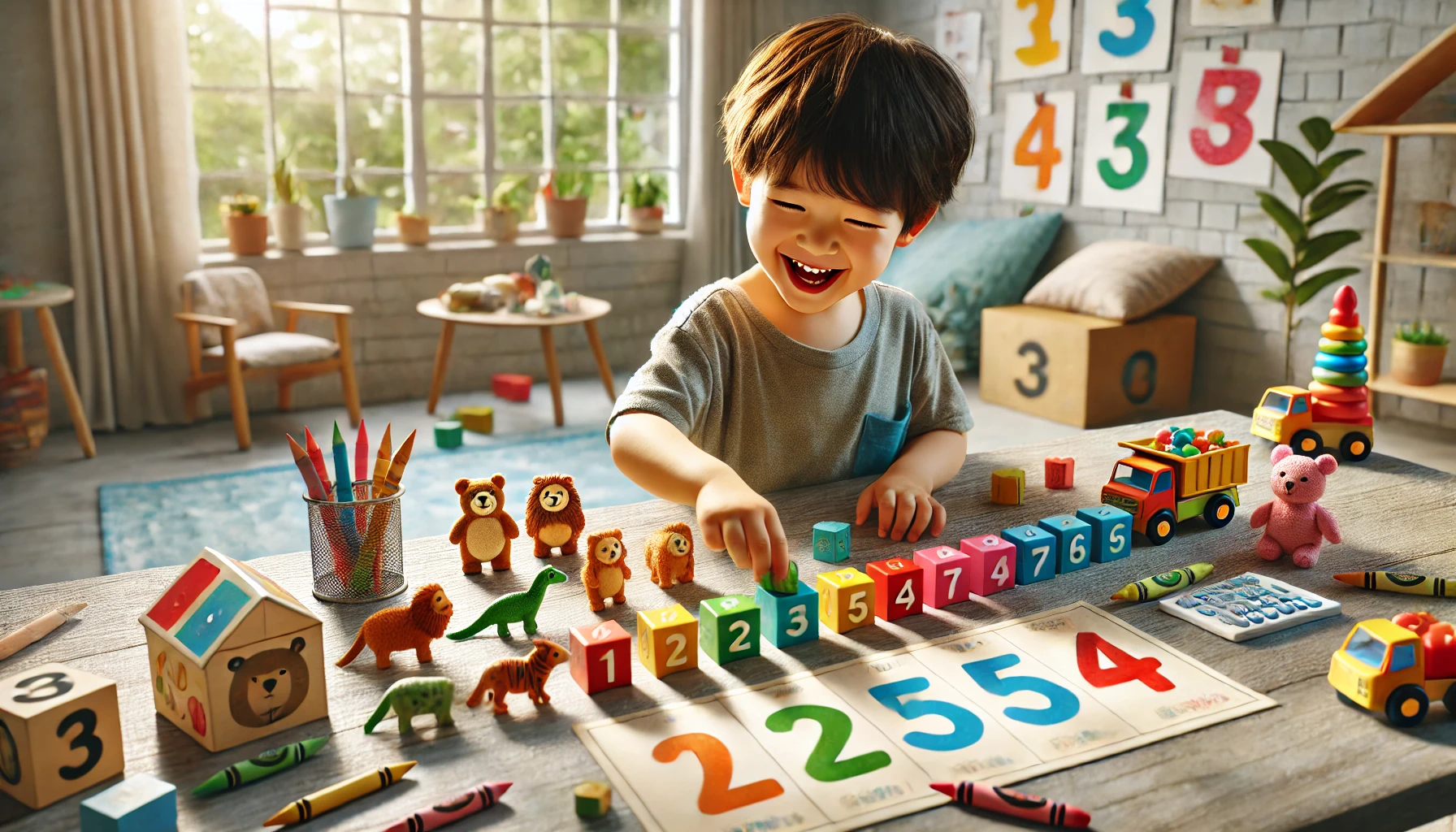Math in early childhood is about so much more than numbers — it’s about patterns, relationships, logic, and curiosity. Teaching math through play helps children understand concepts in a way that feels natural, engaging, and fun.
In this article, you’ll discover easy and playful ways to teach basic math skills at home — no worksheets or pressure required!
Why Teach Math Through Play?
Young children learn best through active, hands-on experiences. When math is taught through play, it becomes:
- Concrete: Children can touch, see, and move things
- Meaningful: It’s connected to their daily life
- Enjoyable: They stay engaged longer and learn with joy
Early math skills are strong predictors of later academic success — and you don’t need to wait until school starts to begin building them.
Key Early Math Concepts to Focus On
Here are some foundational math skills for young children:
- Number sense: Counting, recognizing numbers, one-to-one correspondence
- Patterns and sequences: Identifying and creating predictable patterns
- Sorting and classifying: Grouping by size, color, shape, etc.
- Measurement and comparison: Bigger/smaller, longer/shorter
- Geometry: Recognizing and naming shapes
- Simple addition and subtraction: Understanding more and less
Let’s see how these can be explored through play!
1. Counting with Toys
Skill: Number sense
Gather small toys like cars, blocks, or animals. Ask your child to count them out loud as they place them in a row or container.
Try challenges like:
- “Can you give me 5 bears?”
- “Let’s count how many cars are red.”
- “Add one more — how many now?”
This builds one-to-one correspondence and number recognition.
2. Shape Hunt
Skill: Geometry
Go on a “shape hunt” around the house or outside. Look for:
- Circles (plates, wheels)
- Squares (windows, books)
- Triangles (roof corners, napkins)
- Rectangles (doors, tables)
Make it a game:
- “How many circles can we find in the kitchen?”
- “Can we take photos of each shape?”
You can also draw the shapes on a checklist and let your child tick them off.
3. Pattern Making with Beads or Blocks
Skill: Patterns and sequences
Use beads, colored blocks, or buttons to create patterns like:
- Red, blue, red, blue…
- Small, big, small, big…
Ask your child to continue the pattern or create their own. This helps build logical thinking and prediction skills.
4. Snack Math
Skill: Counting, grouping, comparing
Turn snack time into a mini math lesson:
- “You have 10 crackers. Let’s eat 2 — how many now?”
- “Sort the fruit by color or size.”
- “Let’s share the grapes: 3 for you, 3 for me.”
Use real-life, meaningful examples to make math more relatable.
5. Measuring with Non-Standard Tools
Skill: Measurement
Use spoons, blocks, or hands to measure items around the house:
- “How many spoons long is the table?”
- “Let’s see how many blocks tall your teddy bear is.”
This introduces the idea of measurement before using rulers or numbers.
6. Jump and Count
Skill: Counting, movement integration
Ask your child to jump, clap, or hop a certain number of times. Try:
- “Let’s do 5 jumps!”
- “Clap 3 times!”
- “Can you jump and count to 10?”
It’s a great way to combine physical activity with math — especially helpful for kinesthetic learners.
7. Sorting Games
Skill: Classification and comparison
Provide a mix of buttons, toys, or blocks and ask your child to sort them by:
- Color
- Size
- Shape
- Texture
Ask questions like:
- “Which group has the most?”
- “Can we sort them a different way?”
Sorting boosts observation and logical categorization — important for all math learning.
8. Dice Games
Skill: Number recognition, counting, addition
Roll one or two dice and:
- Count the dots
- Match the number with objects
- Add the numbers together
You can create a simple board game or use a large sheet of paper with numbered steps to move a toy.
9. Toy Store Roleplay
Skill: Counting, money, problem-solving
Set up a pretend store with price tags and play money. Let your child “buy” items by counting out coins or tokens.
Ask:
- “How much does the car cost?”
- “Can you give me two coins?”
It teaches early money skills, addition, and decision-making.
10. Build with Blocks by Number
Skill: Following instructions, spatial awareness
Challenge your child to build:
- A tower with 5 blocks
- A wall with 2 red and 2 blue pieces
- A staircase using 3 different shapes
You can also describe a structure and let them recreate it — supporting math and language skills.
Tips for Making Math Playful and Powerful
- Use everyday moments: Bath time, meal prep, cleaning
- Ask open-ended questions: “What happens if we add one more?”
- Model math talk: “This box is heavier than that one.”
- Encourage trial and error: Let your child explore without fear of mistakes
- Praise effort: Celebrate thinking, not just right answers
Final Thoughts: Math Is Everywhere
Children are natural mathematicians — they count, compare, and notice patterns every day. Your role is to guide, support, and celebrate their discoveries.
By embedding math into playful, hands-on activities, you’ll help your child develop strong foundational skills, a positive attitude toward math, and a lifelong love of learning.
So grab some toys, make a mess, and count the giggles along the way — math learning starts right where you are!
